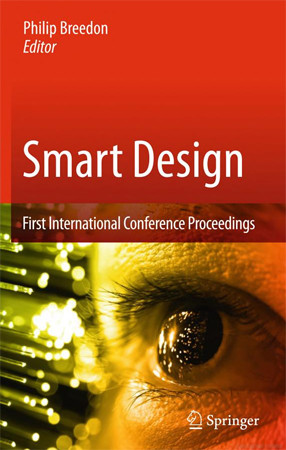Smart Design: rethinking packaging
 First published by Springer, April 2012
First published by Springer, April 2012How electronic packs for pharmaceuticals work with mobile IT to improve patient adherence to medication regimens
Smart Designs is a book edited by Philip Breedon, where the first chapter was co-authored by James Woudhuysen and Peter Rivers. Here is the Abstract followed by a link to read further samples from the FULL version on Google Books or buy online.
Indictments of waste, and distaste for the packaging of consumer goods, are widespread in modern life. Yet in England, at least, households account for less than a third of overall waste, and household waste – like the industrial and commercial kinds – is actually in decline. In addition, the potentialities of packaging as a force for progress are too often ignored. Electronic packaging could improve the way users of prescription drugs take their medicines. With an ageing population taking more and more varied kinds of drugs, patient adherence to medication regimens is a growing social and economic issue. Linked to mobile IT, electronic packaging can, in principle, do much to ensure that medical patients wind up taking the right drugs at the right times.
The paper reviews four examples of electronic packaging, and goes on to situate them in the context of mobile health (mHealth) – mobile telephony applications that prompt patients, each time they take medicine, to report their symptoms very simply and, if necessary, receive advice back from doctors. Together, reporting adherence and symptoms can enable prescribers to build up a rich picture of the effectiveness of each prescription issued. Doses or medication can be changed, or medication withdrawn, using real intelligence about patients. The dual approach outlined here can also reduce the problems that arise with the use of multiple medications by a patient. Innovation in the way in which prescription drugs are packaged could do a lot for society. This paper explores the potential of linking the electronic packaging of medicines to mobile IT, as well as the attitudinal and likely regulatory barriers that could impede progress in this domain.
To open read more of this essay, please click on this Rethinking packaging link.
KOWTOWING TO BEIJING DEPT: Whaddya know? Keir Starmer finally discovers his ‘growth agenda’! As my piece also suggests, the portents don't look good for Labour to protect the UK from CCP operations https://www.reuters.com/world/uk/britain-pares-back-secretive-china-strategy-review-seeking-closer-ties-2024-12-16/
"By all means, keep up the salty, anti-Starmer tweets, Elon. But kindly keep your mega-bucks to yourself."
At the #ECB, convicted lawyer #ChristineLagarde has just beaten inflation, oh yes. But #AndrewBailey's many forecasts of lower interest rates have excelled again, with UK inflation now at 2.6 per cent
Painting: Thomas Couture, A SLEEPING JUDGE, 1859
Articles grouped by Tag
Bookmarks
Innovators I like

Robert Furchgott – discovered that nitric oxide transmits signals within the human body

Barry Marshall – showed that the bacterium Helicobacter pylori is the cause of most peptic ulcers, reversing decades of medical doctrine holding that ulcers were caused by stress, spicy foods, and too much acid

N Joseph Woodland – co-inventor of the barcode

Jocelyn Bell Burnell – she discovered the first radio pulsars

John Tyndall – the man who worked out why the sky was blue

Rosalind Franklin co-discovered the structure of DNA, with Crick and Watson

Rosalyn Sussman Yallow – development of radioimmunoassay (RIA), a method of quantifying minute amounts of biological substances in the body

Jonas Salk – discovery and development of the first successful polio vaccine

John Waterlow – discovered that lack of body potassium causes altitude sickness. First experiment: on himself

Werner Forssmann – the first man to insert a catheter into a human heart: his own

Bruce Bayer – scientist with Kodak whose invention of a colour filter array enabled digital imaging sensors to capture colour

Yuri Gagarin – first man in space. My piece of fandom: http://www.spiked-online.com/newsite/article/10421

Sir Godfrey Hounsfield – inventor, with Robert Ledley, of the CAT scanner

Martin Cooper – inventor of the mobile phone

George Devol – 'father of robotics’ who helped to revolutionise carmaking

Thomas Tuohy – Windscale manager who doused the flames of the 1957 fire

Eugene Polley – TV remote controls



0 comments